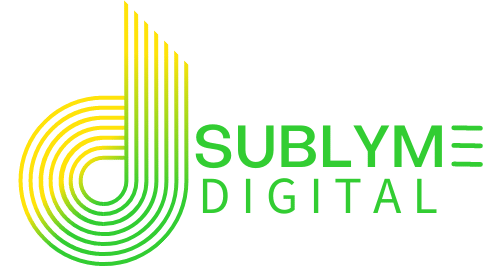
Author: Graham Davidson
Graham Davidson is the Owner and Chief Marketing Guru of Sublyme Digital, leading the agency’s remote-first approach to deliver impactful web design, SEO, and digital growth strategies for businesses across North America.
Write SEO Content That Works for Large Language Models
Quick Answer: To create SEO content for large language models (LLMs) in 2025, focus on clear, well-structured answers to real user questions, use conversational language, and provide authoritative sources. Incorporate structured data, robust FAQs, and maintain factual accuracy to improve your chances of being cited by AI tools. According to Neil Patel’s LLM SEO guide, LLMs prioritize content that is trustworthy, concise, and directly addresses search intent.
Key Takeaways
- Large language models (LLMs) like ChatGPT prioritize natural, conversational, and informative content.
- Structuring content with clear headings, concise answers, and keyword-rich sections improves AI readability.
- Avoid keyword stuffing; instead, focus on semantic relevance and user intent.
- Use schema markup to make your content more accessible to search engines and AI tools.
- Regularly update content to ensure relevance and alignment with evolving AI algorithms.
You know what? Writing for large language models (LLMs) like ChatGPT isn’t just about tossing in a few keywords and hoping for the best. It’s about creating content that’s structured, conversational, and aligned with user intent.
Here’s the thing: AI tools like ChatGPT are reshaping how people search for and consume information. To stay ahead, your content needs to be optimized not just for traditional search engines but also for these advanced AI systems.
In this blog, we’ll explore how to create SEO content that works seamlessly with large language models. Whether you’re a business owner, content creator, or SEO strategist, these tips will help you craft content that’s both user-friendly and AI-optimized.
Why Optimize for Large Language Models?
The Rise of AI-Driven Search
Let me explain. Traditional search engines are still important, but AI-driven tools like ChatGPT are becoming the go-to for quick, conversational answers. Optimizing your content for these tools ensures you’re visible to a growing audience that relies on AI for information.
Enhancing User Experience
Honestly, LLMs prioritize content that’s easy to read and understand. By focusing on clarity, relevance, and conversational tone, you’re not just optimizing for AI—you’re improving the experience for your human readers too.
Staying Competitive
Here’s the thing: if your competitors are optimizing for large language models and you’re not, you’re leaving traffic—and potential customers—on the table. Aligning your content with AI trends keeps you ahead of the curve.
Best Practices for Creating SEO Content for Large Language Models
1. Use Conversational Language
You know what? Large language models are designed to mimic human conversation. Write your content the way you’d explain it to a friend—clear, engaging, and free of unnecessary jargon.
For example, instead of saying, “Our proprietary methodologies ensure optimal outcomes,” say, “Our unique approach gets great results.” It’s more relatable and easier for AI to process.
2. Focus on User Intent
Let me tell you, understanding what your audience is searching for is crucial. Think about the questions they’re asking and structure your content to provide direct, helpful answers.
For instance, if your audience is searching for “How to optimize content for ChatGPT,” your content should address that question in detail, using clear headings and actionable tips.
3. Structure Your Content for Readability
Here’s the thing: AI tools like ChatGPT love well-structured content. Use headings, subheadings, and bullet points to make your content easy to scan.
Think of your content as a conversation. Break it into bite-sized sections, and use short paragraphs to keep readers (and AI) engaged.
4. Prioritize Semantic Relevance
Keywords are still important, but semantic relevance is the real game-changer. Instead of repeating the same keyword, use related terms and phrases to provide context.
For example, if your main keyword is “SEO for large language models,” include related terms like “AI-driven search optimization” and “content for ChatGPT.”
5. Incorporate Schema Markup
Let me explain. Schema markup helps search engines and AI tools understand your content better. Adding FAQ schema, article schema, or how-to schema can improve your chances of appearing in featured snippets and AI-driven results.
Creating SEO content for large language models is about more than keywords—it’s about crafting conversations that connect with both AI and your audience.


We can’t recommend him enough!
We Build Cool
Advanced Techniques for LLM-Optimized Content
Use AI Tools to Your Advantage
Honestly, tools like ChatGPT and Grammarly can help you refine your content for readability and tone. Use them to draft, edit, and optimize your content, but always add a human touch to ensure authenticity.
Optimize for Voice Search
Here’s the thing: voice search queries are often longer and more conversational than text-based searches. Tailor your content to align with these patterns by using natural language and long-tail keywords.
Regularly Update Your Content
Let me tell you, outdated content won’t perform well with LLMs. Make it a habit to review and update your content regularly to ensure it’s accurate, relevant, and aligned with current trends.
Common Mistakes to Avoid
Keyword Stuffing
You know what? Keyword stuffing is a big no-no. It makes your content feel unnatural and can hurt your SEO rankings. Focus on quality over quantity when it comes to keywords.
Ignoring User Intent
Let me explain. If your content doesn’t address what users are actually searching for, it won’t perform well—no matter how many keywords you include.
Overlooking Schema Markup
Honestly, failing to use schema markup is a missed opportunity. It’s an easy way to make your content more accessible to AI tools and search engines.
Final Thoughts
Here’s the bottom line: optimizing your content for large language models isn’t just a trend—it’s a necessity. By using conversational language, focusing on user intent, and structuring your content for readability, you can ensure your content resonates with both AI tools and human readers.
But here’s the thing: optimization isn’t a one-and-done process. Regularly review your content, update it to stay relevant, and embrace new tools and techniques to keep your strategy ahead of the curve. The effort you put into creating LLM-optimized content will pay off in better visibility, engagement, and results.
FAQs:
Answer: Large language models (LLMs) are AI tools like ChatGPT that generate human-like text based on user input. They’re designed to assist with tasks like answering questions, drafting content, and providing recommendations. Learn more about our AI and LLM optimization strategies.
Answer: To optimize content for LLMs, use conversational language, focus on user intent, and structure your content with clear headings and concise answers. Adding schema markup can also improve visibility. See our holistic search optimization guide for future-ready strategies.
Answer: Conversational language aligns with how LLMs process and generate text. It makes your content more engaging and easier for AI tools to understand. Explore our blog for more LLM and SEO insights.
Answer: Absolutely. Optimizing for LLMs can boost your visibility in AI-driven search results, improve engagement, and enhance user experience. Discover our SEO services for businesses.
Answer: Tools like ChatGPT, Grammarly, and Hemingway Editor can help you draft and refine content for LLMs. Use them to ensure clarity, readability, and conversational tone. Request a content audit or update from our team.
Success Stories
365 Data Centers
Discover how we rapidly rebuilt and optimized a 30-page website for 365 Data Centers, restoring their online presence and managing digital ad campaigns across key regions to drive engagement and growth.
XTECH Football Pads
Discover how we transformed XTECH Football Pads‘ digital presence, boosting their online sales and tripling website traffic through innovative website development and user experience enhancements.
BeEarth Foundation
Discover how we partnered with the BeEarth Foundation to develop a website that aligns with their mission of sustainability and global engagement. Our work has significantly increased their online visibility and engagement, supporting their efforts to promote sustainable development.
We Recycle Solar
Learn how we illuminated digital success for We Recycle Solar by completely redesigning their website to reflect their leadership in the growing solar recycling industry and implementing strategic digital advertising campaigns that enhanced their visibility at key industry events.
Preferred Home Health Care & Nursing Services
Explore how we elevated the digital presence of Preferred Home Health Care & Nursing Services by enhancing their website for better lead generation, building a dedicated site for staff recognition, and optimizing SEO for their location pages.
What Our Clients Say: Elevating Online Success
Let's Build Something Sublyme
Ready to create SEO content that works for large language models? Sublyme Digital specializes in crafting AI-optimized content that drives results. Contact us today to get started!








